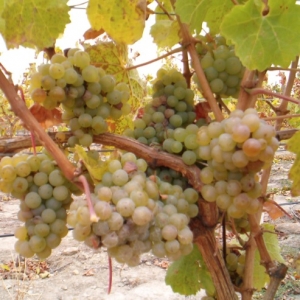If numbers were the only way to judge – and they are a good indication, in sales terms – then Riesling has significantly less value today compared to a decade ago.
While Riesling occupies 1009 hectares of vineyard nationwide – up just 356 hectares since 2003 - Pinot Gris now occupies 1,764 hectares nationally; not bad for a grape which had a total of only 316 hectares a decade ago.
Lest this picture sound bleak for devotees of Riesling, Marlborough winemaker Andrew Hedley, North Canterbury winemaker Mat Donaldson and a handful of other passionate Riesling makers say the state of Riesling in New Zealand has never been better.
“In terms of what New Zealand can offer the world, we’re not really going to compete on volume compared with places like Australia, Italy and France and so on. Riesling is not trendy, popular or big volume for New Zealand, but it adds to New Zealand’s high quality image,” says Hedley; a self-professed Riesling fanatic and maker of a vast range of different styles at Framingham Winery in Marlborough.
Donaldson from Pegasus Bay agrees: “I used to think Riesling might be the new Sauvignon Blanc but now I just think more people will start to get what Riesling’s all about, but that it will remain a relatively minor variety in terms of volume.”
So, what does this mean for Riesling’s future?
Hedley says the only way Riesling has been eclipsed is in numbers; which are driven by “supposed mass appeal”.
“Whenever you get companies chasing “mass appeal” – volume, in other words - you’re always going to get plenty of cheap, dull wines as well as innovative wines. This has meant that producers that are serious or even semi serious about Riesling have had to make sure they have good vineyard sites and are more quality focused with their vineyard practices. If you can’t or aren’t prepared to do that, you may as well replant,” says Hedley.
Far from doing so, he has devoted greater time and energy to creating a vast range of different Riesling styles.
“The rise in naturally lower alcohol and more tense styles of Riesling over the last five or six years from many New Zealand wineries shows the level of seriousness with which those in the industry take Riesling,” he says.
Donaldson predicts Riesling will remain relatively minor in terms of volume but suggests an increasing number of wines will be made in which botrytis is an accepted, valid component of the wine – rather than something to fear and shy away from.
“I think more people will get that aspect of Riesling and not be afraid of it in the future the way we have been up till now. The whole paranoia about botrytis in Riesling stems from what happens when we get it in Sauvignon Blanc; in which it oxidises the thiols,” Donaldson says.
“Many people naturally assume it’ll be the same with Riesling but in actual fact the same compounds which give Riesling its terpenes are bound and are not readily oxidized.”
Another aspect of Riesling’s challenge is its versatility – and therefore its confusing array of styles for the consumer; from bone dry to sweet, with everything in between.
“Because of our obsession with dry wines, quite a few Rieslings which have a bit of residual sugar end up polarizing some wine drinkers, but we need to show these wines can taste delicious so that wine drinkers are no longer afraid of enjoying them,” says Donaldson.
Compared with Pinot Gris, Riesling is more of a challenge. The wine industry should view this as a good thing for Riesling.
“The general cross section of the population are not looking at wine intellectually and we in the industry are not just looking at a beverage – we’re looking for an X-factor and we don’t mind paying higher prices and drinking more challenging wines. In fact that’s exactly what we want and why we enjoy Riesling,” says Donaldson.
“The reason Pinot Gris is so popular is that it’s low in acid and it’s easy to just chuff back. It’s reasonably high in alcohol and has an effect, but Riesling is hard work. It’s high in acid and it has a specific type of phenolics. You can’t just chuff it back, so it’s never going to be a variety with mass appeal, unless it’s made in a bland style.”
Central Otago viticulturist Max Marriott specializes in Riesling, making four individual vineyard expressions from different sites in Central every year.
“When you look at Germany as Riesling HQ - the benchmark for Riesling - the naturally high acidity that we are also lucky enough to get in New Zealand Riesling gives it an edge and versatility above many other New World countries that could one day - and perhaps that day is coming - rival those of the Old World, as our vines age and our experience increases.”
Hedley’s Riesling Advice
“Keep calm and carry on. Absolutely don’t chase mass appeal and volume with Riesling as that is often a path to rubbish. Avoid any sense of fashion. Retain a quality focus at all times and develop your individual expressions. Preach the gospel whenever possible, but don’t expect to convert masses of people to the variety. Preach a different gospel to the already converted and get Riesling lovers (they exist) around the world to drink more New Zealand Riesling by talking in terms of balance, tension, minerality and richness. Avoid the ‘s’ word. This is starting to sound like McLaren’s 10 lessons from the Great Rock ’n’ Roll Swindle, I should stop.” ν
This email address is being protected from spambots. You need JavaScript enabled to view it.










